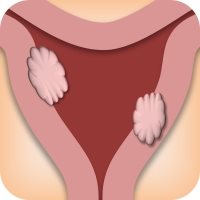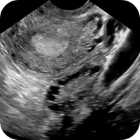
What are Fibroids?
Fibroids, also known as Uterine Leiomyomatas, are roundish balls of muscle tissue which can grow in the uterus. They are not cancerous, and usually do not cause problems. However, if they are big enough, they can change the shape of the uterus cavity and cause fertility problems.
They can either cause problems with implantation of the fertilised egg, or sometimes they can cause early miscarriages as there is not sufficient space for the growing embryo to develop.
Not all fibroids cause fertility problems. It is thought that it is only the fibroids which are growing within the space in the uterus which are problematic. Those that develop within the muscular wall or on the outside of the uterus are thought to be okay.
What are the chances of having Fibroids?
Fibroids themselves are fairly common with 20-40% of women over the age of 35 being affected. However, as mentioned in the description, the presence of fibroids does not automatically cause fertility problems.
Fibroids can be found in anyone, but are more commonly found in women of African-American background.
Fibroids Symptoms
There are no specific signs or symptoms of fibroids, with many women being unaware that they have them. However, occasionally they may cause abnormal uterine bleeding and heavy painful periods.
Fibroids Diagnosis
Fibroids can easily be seen on a pelvic ultrasound scan, so your doctor may arrange for this if there are concerns about them being present. Ultrasound would also be able to determine the size of any fibroids present and where they are growing, and hence whether or not they would impact upon fertility.
Fibroids Treatment
Alternative treatment depends upon the size and placement of the fibroids and the symptoms that they are causing. As they are not cancerous, if they are not causing problems, then your doctor may advise no treatment is necessary.
Where treatment is needed, minimally invasive procedures are preferred for women who are either currently planning a pregnancy, or may do so in the future. This involves removing the fibroids from the muscular wall of the uterus. It is successful, with pregnancy rates post treatment of 40-60%. However, fibroids may grow back over time with this method.
A more definitive method of removing the fibroids involves cutting off the blood supply to the fibroids (embolisation), or even removal of the womb itself in more severe cases (hysterectomy).
The contraceptive pill, coil or implant can be helpful if symptomatic treatment only is needed. However, this is obviously not an option if you want to get pregnant.
Links to Popular Related Pages







